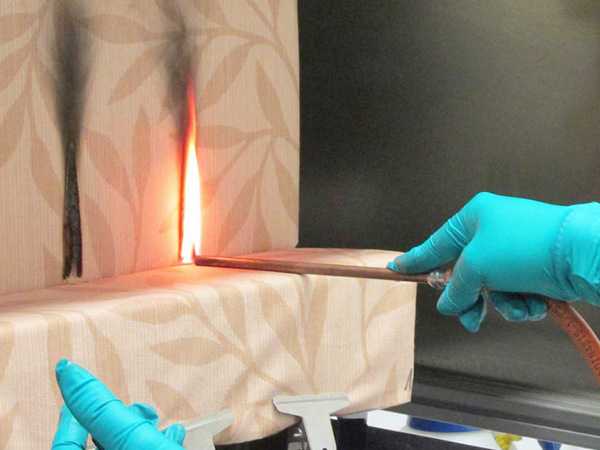Testing and Evaluation of Flame Retardant Properties of Textiles

Textiles are widely used in daily life, and flame retardant performance, as one of the important performance indicators, is essential to protect people's lives and property. This articles will introduce the textiles flame retardant performance testing and evaluation methods.
Definition and significance of flame retardant performance
Flame retardant performance refers to the performance of materials that do not burn easily or do not support burning easily when they are subjected to fire or high temperature and follow certain specific mechanisms. As a widely used material, the flame retardant performance of textile is directly related to the safety of people's lives and properties. Therefore, it is of great significance to test and evaluate the flame retardant performance of textiles.

The textile flame retardant performance testing methods
1. Vertical combustion method
Vertical combustion method is to place the sample in the combustion device from top to bottom, and make contact with the fire source, observe the burning speed, time, smoke and other factors when the sample is burning, so as to assess the flame retardant performance of the sample.
2. Burning test under simulated real-world conditions
Combustion test under simulated real use environment means placing textile samples in a combustion device simulating real use environment, simulating the combustion situation under real environment, and evaluating the flame retardant performance of textiles under real use environment.

3. Thermogravimetric analysis method
The thermogravimetric analysis method refers to heating the sample under certain temperature and atmosphere conditions, and evaluating the flame retardant performance of the sample by testing the weight loss and temperature of the sample.
Evaluation methods of flame retardant properties of textiles
1. Combustion performance evaluation
Combustion performance evaluation is mainly to evaluate the flame retardant performance of textiles by evaluating the smoke, flame and combustion temperature during the combustion process.
2. Flame retardant evaluation
The evaluation of flame retardant is to evaluate the effect of adding different flame retardants on the flame retardant performance of textiles, so as to determine the best amount and type of flame retardant to add.
3. Textile performance evaluation
Textile performance evaluation is mainly to evaluate the physical properties, chemical properties and mechanical properties of textiles, so as to assess the flame retardant performance of textiles.
IV. Conclusion
The testing and evaluation of textile flame retardant performance is one of the important means to protect people's life and property. At present, the commonly used textile flame retardant performance testing methods mainly include vertical combustion method, burning test under simulated real use environment and thermogravimetric analysis method. The evaluation methods of flame retardant performance mainly include evaluation of combustion performance, evaluation of flame retardant, evaluation of textile performance, etc. By testing and evaluating the flame retardant performance of textiles, it can help people choose more safe and reliable textiles and improve the level of flame retardant performance of textiles.
2023-04-11 10:10


